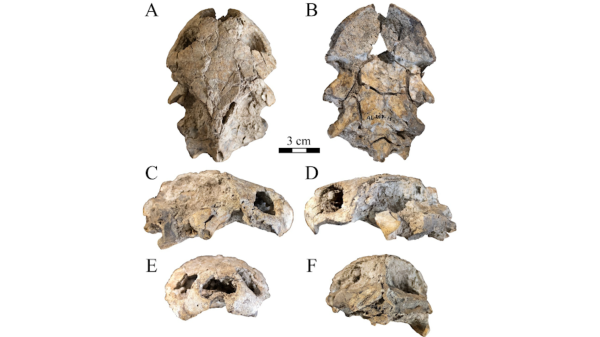ASU study: Satellite captures carbon dioxide aurora from space

Auroral signatures observed from the CO2 4.3 micrometer emission from space during the October 13–14, 2016, geomagnetic storm. Graphic courtesy Katrina Bossert/ASU
While the night sky, with its display of "northern lights" or auroras, has captivated the attention of scientists and sky gazers for centuries, much less is known about the aurora associated with carbon dioxide until now.
In a new study published in AGU Geophysical Research Letters, scientists unveiled global observations of aurora associated with carbon dioxide using satellite measurements.
When we think of auroras, we often envision dazzling green and red lights dancing in the sky. However, the aurora has numerous associated emissions occurring in different regions of the atmosphere, most of which aren't visible to the human eye.
The Earth’s atmosphere is composed of several layers. The troposphere is where we experience most of Earth’s weather. The next layer, the stratosphere, contains Earth’s ozone layer, which protects us from the sun’s harmful ultraviolet radiation. The middle layer is the mesosphere, where meteors burn up as they encounter the quickly increasing density of Earth’s atmosphere. Above this layer is the thermosphere, which is located between 80 km and 700 km above Earth’s surface, overlapping the ionosphere, the part of the atmosphere with charged ions and electrons.
Near the bottom of the thermosphere is the “edge of space" — also known as the Karman line, around 100 km in altitude. The Karman line denotes the altitude at which satellites can orbit. Many auroral emissions occur in the thermosphere and ionosphere region of Earth’s atmosphere. The commonly observed green and red auroras occur near 100 km and 250 km in altitude, respectively, due to an excited state of atomic oxygen.
As energetic particles crash into Earth's atmosphere, they interact with a mixture of atoms and molecules. One of these molecules is carbon dioxide. While carbon dioxide is known for its effects on the troposphere as a greenhouse gas, it also exists in trace amounts in Earth's atmosphere at the edge of space.
High above the Earth, near 90 km, or ~56 miles, carbon dioxide becomes vibrationally excited during an aurora, emitting more infrared radiation than typically observed in the atmosphere.
To observe elevated infrared signals from carbon dioxide during an aurora, lead author and Arizona State University scientist Katrina Bossert, with an international team of researchers, used the Atmospheric Infrared Sounder, which gathers infrared energy emitted from Earth's surface and atmosphere globally, every day. Its data provides 3D temperature and water vapor measurements through the atmospheric column and a host of trace gasses, surface and cloud properties onboard NASA's Aqua satellite.
The international collaborating science team observed elevated infrared signals from carbon dioxide during an aurora. Working to isolate these emissions provides a dataset for future research to study aurora and energetic particle precipitation globally.
"This offers a new way to observe Earth's aurora from space. Different auroral emissions can be associated with different altitudes and particle energy," said Bossert, assistant professor at the School of Earth and Space Exploration and the School of Mathematical and Statistical Sciences at ASU. "Carbon dioxide auroral emissions occur in the region we consider the edge of space, a little lower in altitude than where satellites typically orbit. The observations may yield insight into physical processes associated with the aurora."
While it was previously known that carbon dioxide could become excited during an aurora, this dataset and analysis method provides the first daily global observations over regions of the northern and southern hemispheres using a nadir-viewing satellite instrument. The satellite measurements span over 20 years and can be used for future studies of aurora and energetic particle interactions with Earth's atmosphere.
Additional study authors include Lars Hoffmann of Jülich Supercomputing Centre, Martin Mlynczak of NASA Langley Research Center and Linda Hunt of Science Systems and Applications Inc.
More Science and technology

New research by ASU paleoanthropologists: 2 ancient human ancestors were neighbors
In 2009, scientists found eight bones from the foot of an ancient human ancestor within layers of million-year-old sediment in…

When facts aren’t enough
In the age of viral headlines and endless scrolling, misinformation travels faster than the truth. Even careful readers can be…

Scientists discover new turtle that lived alongside 'Lucy' species
Shell pieces and a rare skull of a 3-million-year-old freshwater turtle are providing scientists at Arizona State University with…